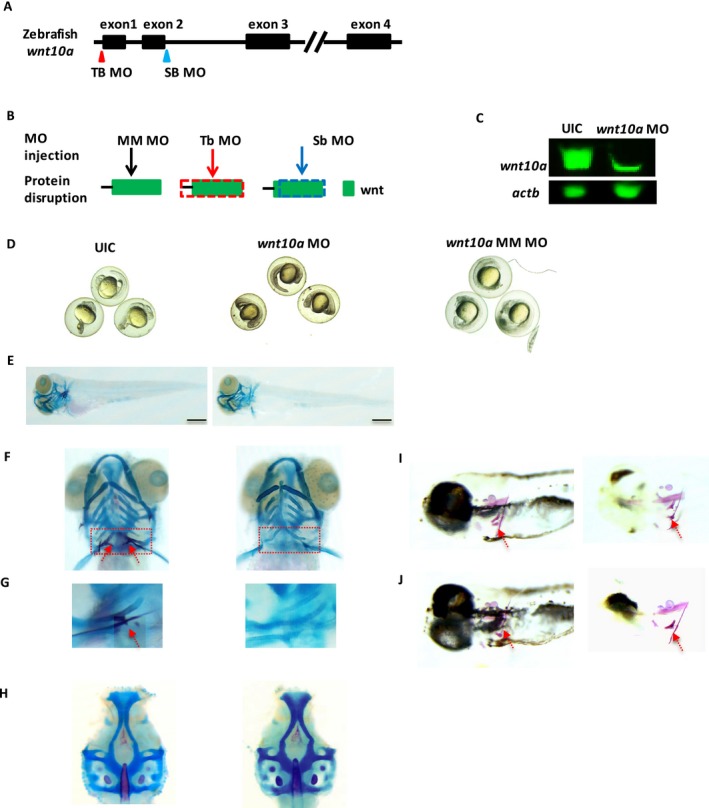Figure 3.

Knockdown of wnt10a expression impairs tooth development at 5dpf and recapitulates human tooth agenesis phenotype. (A) Morpholino knockdown of zebrafish wnt10a. Target sites for translation‐blocking (TBMO, red triangle) and splice site‐blocking (SBMO, blue triangle) morpholinos. (B) Morpholinos were used to block the translation initiation complex (TB) or the locus involved in splicing pre‐mRNA (SB), or used as mismatch control (MM). Wnt10a protein production is disrupted at dotted frames for TB (red frame) and SB (blue frame). (C) Western blot analysis confirming knockdown efficiency. Wnt10a level was largely reduced in the MO‐injected zebrafish embryos compared to uninjected control (UIC) embryos. Beta‐actin was used as loading control. (D) UIC, wnt10a‐MO‐injected fish and mismatch‐MO‐injected embryos at 24hpf do not present gross body abnormalities. (E–H) Alcian blue and alizarin red staining of: (E) UIC, wnt10a morpholino‐injected (MO) zebrafish at 5dpf showing similar body structure and appearance, and (F,G) the presence of pharyngeal teeth in UIC (red arrow, left panel), but not in wnt10a‐MO‐injected embryos (right panel). (G) Higher magnification of dotted box in (F). (H) UIC control zebrafish embryos had no noticeable cartilage defects, whereas wnt10a‐MO‐injected fish presented with some cartilage abnormalities. (I, J) Mismatch morpholino‐injected embryos at 5dpf develop normally and present with pharyngeal teeth (red arrows) similarly to UIC embryos (embryos were cleared to enhance mineralized structures). Scale bar represents 150 µm.
